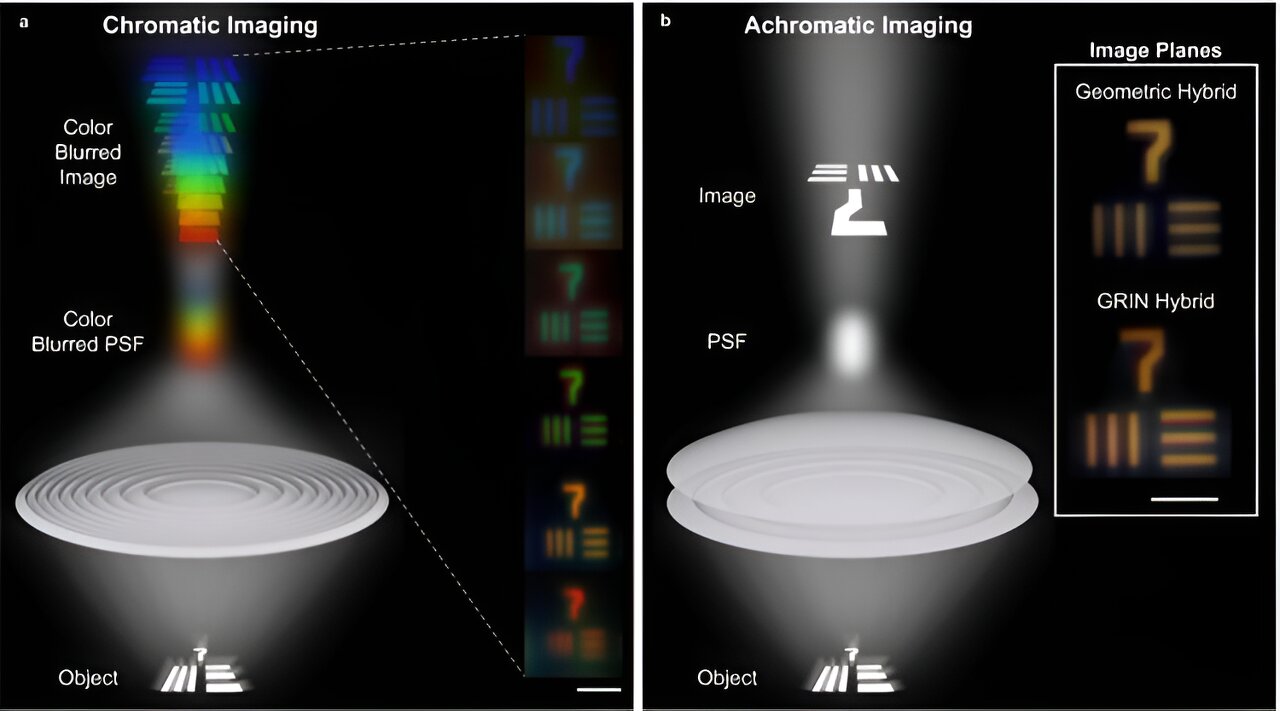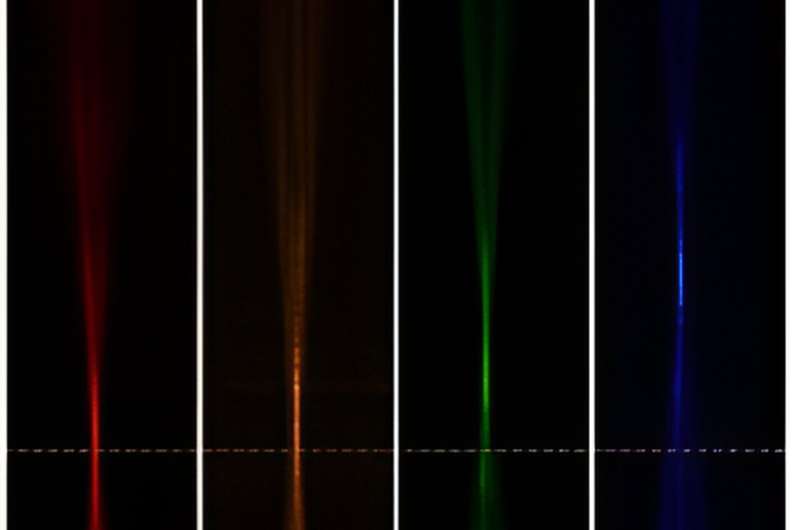

Using 3D printing and porous silicon, researchers at the University of Illinois Urbana-Champaign have developed compact, visible wavelength achromats that are essential for miniaturized and lightweight optics. These high-performance hybrid micro-optics achieve high focusing efficiencies, while minimizing volume and thickness. Further, these microlenses can be constructed into arrays to form larger area images for achromatic light-field imagers and displays.
This study was led by materials science and engineering professors Paul Braun and David Cahill, electrical and computer engineering professor Lynford Goddard and former graduate student Corey Richards. The results of this research were published in Nature Communications.
“We developed a way to create structures exhibiting the functionalities of classical compound optics but in highly miniaturized thin from, via non-traditional fabrication approaches,” says Braun.
In many imaging applications, multiple wavelengths of light are present, e.g., white light. If a single lens is used to focus this light, different wavelengths focus at different points, resulting in a color-blurred image. To solve this problem, multiple lenses are stacked together to form an achromatic lens. “In white light imaging, if you use a single lens, you have considerable dispersion, and so each constituent color is focused at a different position. With an achromatic lens, however, all the colors focus at the same point,” says Braun.
The challenge, however, is that the required stack of lens elements required to make an achromatic lens is relatively thick, which can make a classical achromatic lens unsuitable for newer, scaled down technological platforms, such as ultracompact visible wavelength cameras, portable microscopes and even wearable devices.

To form a much thinner lens, the team combined a refractive lens with a flat diffractive lens. Braun explains that the bottom lens is the diffractive lens that focuses red light, for example, closer, and the top lens is the refractive lens that focuses red further. They cancel each other out and focus to the same spot.
To create the compact hybrid achromatic imaging system, the researchers developed a fabrication process, called Subsurface Controllable Refractive Index via Beam Exposure (SCRIBE), in which polymeric structures are 3D printed in a porous silicon host medium that mechanically supports the optical components. In this process, liquid polymer is filled into the porous silicon and an ultrafast laser is used to convert the liquid polymer into solid polymer. With this method, they were able to integrate the diffractive and refractive elements of the lens without the need for external supports while also minimizing volume, increasing ease of fabrication and providing high-efficiency achromatic focusing.
“If you print lenses in air and you want to stack two together, you would need to print the first lens and then build a support structure around it,” explains Richards. “Then you would need to print the second lens within that support structure. But in porous silicon, you can just suspend the two lenses over each other. Integration is much more seamless in that sense.”
Using this approach, larger area images can be reconstructed from an array of hybrid achromatic microlenses. The array can capture light-field information, which is a significant challenge for conventional polymer microlenses, which are generally not achromatic, and will pave the way for applications like light-field cameras and light-field displays.
Citation:
A new (micro) lens on optics: Researchers develop hybrid achromats with high focusing efficiencies (2023, December 9)
retrieved 9 December 2023
from https://phys.org/news/2023-12-micro-lens-optics-hybrid-achromats.html
This document is subject to copyright. Apart from any fair dealing for the purpose of private study or research, no
part may be reproduced without the written permission. The content is provided for information purposes only.





